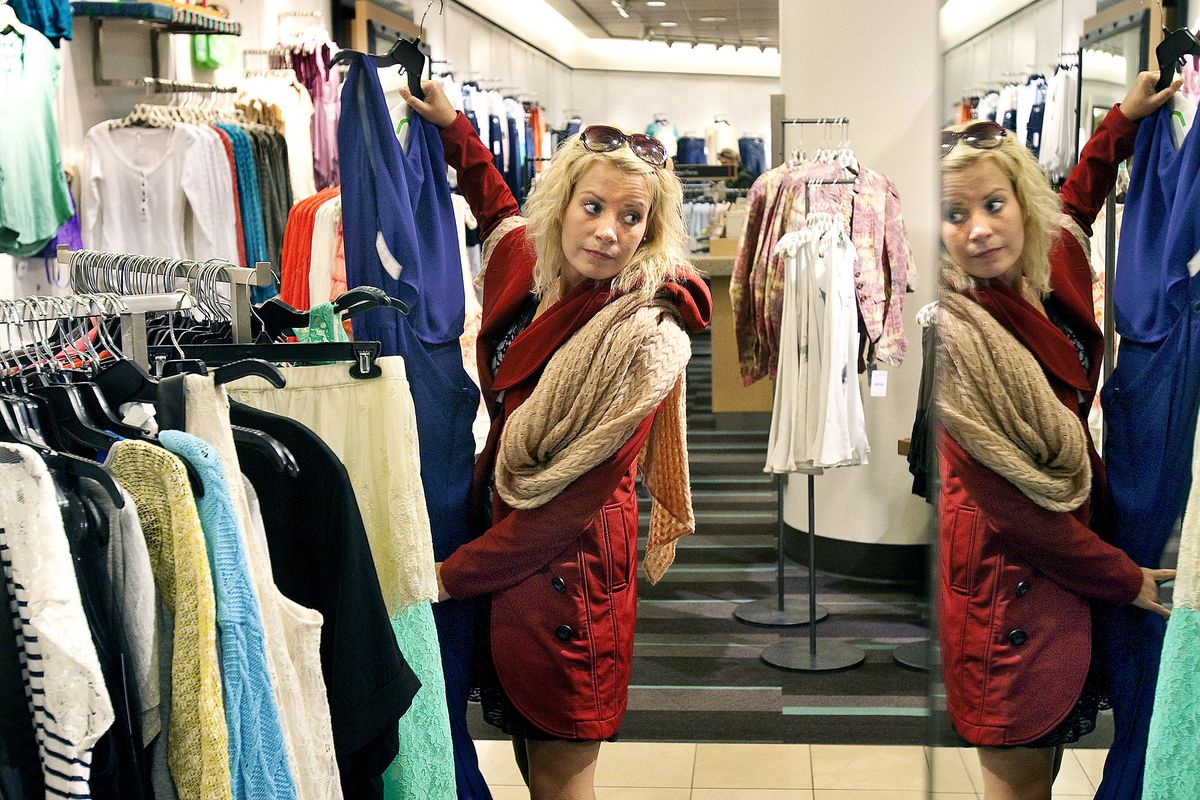Nordstrom stakes out Savvy, affordable style
New lines respond to customers seeking look with smaller budgets

For young women in a wired world, a mobile device is as much a fashion statement as the clothes they wear. Even if money’s tight, many will find room in their budgets for a smartphone and tablet and make the most of old clothes.
That’s a challenge for Nordstrom, which now hopes to attract 20- and 30-somethings with more trendy, moderately priced clothing that better suits their spending habits.
Nordstrom’s nearly 120 full-scale stores nationwide have revamped their “Savvy” clothing departments to give off an affordable, ready-for-the-weekend vibe.
At the downtown Seattle Nordstrom, bright displays call out women’s tops for $36 and boyfriend-style jackets for $78. Scattered throughout are $18 woven-leather bracelets and earring-and-necklace sets for less than $40.
The makeover builds on Nordstrom’s move last year to sell edgy, cheaper clothes from British chain Topshop, signaling a desire to go down-market to fit smaller budgets.
“One of the things that we heard from our customers for a number of years is, ‘Boy, the stuff we love, we can’t afford, and the stuff we can afford, we don’t like too much,’ ” Nordstrom Chief Financial Officer Mike Koppel said at a recent investors conference.
“We felt that we had an opportunity to have better product that was more accessible,” he said.
Seattle-based Nordstrom’s Savvy department now carries newcomers such as MinkPink, a vintage-inspired label also found at Urban Outfitters, as well as BlankNYC, which sells “spray-on” skinny jeans and studded ripped shorts for $98.
High-end labels like Robert Rodriguez and Haute Hippie have moved to other departments, bringing Savvy’s average price down to about $50 from more than $150.
“It’s nice that they’re offering low prices,” said Tiia Lustig, 24, who eyed short, flowy skirts for $48 at the downtown Nordstrom last week. “It’s not just Chanel and Gucci.”
The new Savvy department also tears a page from the fast-fashion playbook, changing up its merchandise almost daily to get customers coming back more frequently.
“This is newness at a faster rate,” said Tricia Smith, general merchandise manager of women’s apparel at Nordstrom. “The product comes in at twice the rate of other departments, and we’re able to react more quickly.”
But what if the changes turn off well-heeled customers who see Nordstrom as their go-to place for luxury classics?
Some say that’s both an unlikely risk and one worth taking anyway.
Last May, retail analyst Jennifer Black warned of a void between Nordstrom’s teen-clothing section and various women’s departments.
“There are no in-between younger brands once she graduates from Brass Plum,” Black wrote in a research note to clients. “Savvy, TBD and Individualist are too expensive, and the other departments are too old, in our opinion.”
Black now gives Nordstrom strong marks.
“They’ve kept some of the older brands and brought in these other brands that are what I’d consider great fashion at attainable prices,” she said. “It’s really edgy, and you can afford it, and it just seems like it’s gaining traction.”
Since the recession, Nordstrom and other department-store stalwarts have had to get creative as global rivals H&M and Zara bring runway trends to the malls faster and cheaper. At the same time, young women are stretching their budgets across an ever broader set of products. Nordstrom’s sales rose a solid 12 percent last year to more than $11 billion, but its largest merchandise category – women’s apparel – shrank to 31 percent of the total from 33 percent in 2011.
“When the consumer cares more about their cellphone than their outfit, we know we have a challenge in the industry,” said Marshal Cohen, chief industry analyst at market-research firm The NPD Group.
“It’s no longer about me telling you what I think you want. It’s now about reacting to what you tell me you want, and at a price you think is worthwhile,” he said.
“Nordstrom is saying, ‘We need to compete in the 21st century.’ ”